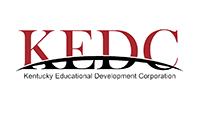03/19/19- Golf Realignment and Format Status
PrintSeptember, 2018 – Board begins discussions surrounding golf realignment and tournament qualification.
- Realignment was viewed as long overdue and the Board and staff have spent a great deal of time discussing the state golf tournament and the best way to qualify teams and individuals.
- The membership through its Principals and Designated Representatives had expressed a desire through various meetings to have the boys and girls in golf in the same region.
- For several years, golf had twelve regions for boys and eleven for girls.
- In addition, the Kentucky Golf House had worked with staff and participants to emphasis pace of play at the state tournament in a variety of ways. The staff and Board of Control were aware of this concern, but primarily to the extent that the rounds of golf could be completed each day and not require stayovers to finish incomplete rounds.
November, 2018 – Board further discusses issues surrounding golf championship.
- Blog post issued November 18 and sent to membership summarizing objectives.
- The Board was given a draft copy of a proposal being discussed by specific members of the Golf Coaches Association with staff members of the Kentucky Golf House. In response, the Board issued a statement in the blog post about its philosophy in alignment not only golf, but all sports.
- First, it is not the objective in golf, or in any of the other 17 KHSAA championships, to create an event that ensures the absolute best possible field is at the state tournament or that quality of play is a criterion. The role of the Board of Control in developing policy, and of the staff in implementing that policy through procedures and events, is to ensure that all regions of the state have an opportunity to have competitors experience the state championship and represent their schools, communities and regions. This may not always result in the absolute best individuals or teams, or even the best quality of play, but does ensure a quality experience for all.
- Secondly, there has been misinformation through the golf community about the creation of an additional round of play to further “weed out” competitors in between region and state play. The Board and staff are aware of those discussions, and though they were purportedly generated by an outside organization (the golf coaches), it is also clear that all members of the golf coaches association were not involved. As such, while the Board is aware of the discussion, that proposal is not being considered at this time. The plan by the Board is to refine the current system, addressing both geographic and representation concerns, reduce or minimize region travel where possible, and address pace of play issues that continue to plague this event, as it is played in the fall as days become shorter and daylight more scarce.
- At the November meeting, the Board laid out several objectives it was going to study including:
- Equalize the number of regions in boys’ and girls’ golf, with all schools being in the same region for both. This was not always possible, especially in the early days when girls’ golf was not as popular. However, as participation in girls’ golf has continued to grow, it is evident that it is no longer necessary to separate the alignments.
- Reduce region travel in the geographic extremes of the state where possible, including increasing the number of regions.
- Ensure that groups of schools that are assigned to a basketball region are assigned together to golf regions, even if it is not the same as their basketball region. For example, in boys’ golf at the current time, schools that are placed in one region in basketball are spread through four different golf regions. This has been a consistent request of the membership and desire of the Board, as the enhanced efficient communication that will occur because of these natural relationships is of great benefit to all of the participating students, coaches, and schools.
- Develop a qualifying procedure that sets an ideal state tournament field at 144 to 156 golfers, which appears optimal for a fall tournament given the available hours of play each day. This may include a review of reducing the number of members scoring per qualifying team while at the same time, creating a system where there are not inherent reductions in entry opportunities per school.
- This review also includes a careful review of qualifying standards and requirements to address issues where it has been opined that the participation experience of some may be negatively impacted by the pace of play of other qualifying competitors.
- If possible, and only if defensible by participation data, align the golf schools in the same regional geographic boundaries as the basketball alignment, which is the pattern by which baseball, softball, soccer, volleyball, and tennis now are bounded. It is also a noted consideration that even with an increased number of regions, the matching of the basketball alignment may not be possible given the other objectives.
- Paramount in this discussion was the ability to complete the rounds of golf within the parameters of each day. Reports from throughout the state were given that due to weather delays, etc., teams had been compelled to stay overnight to complete rounds and in many cases, these were schools clearly not in contention for team awards.
- There was also considerable discussion about the pace of play in individuals, and the historical trend of slightly slower play by females and this is compounded by likely additional qualifiers in equalizing regions and the shortening of the daylight hours in the fall of 2019 with season calendar rollover.
January, 2019 – Board reviews results of a survey of the membership.
- Each school, through its Principal, was surveyed regarding data from entries in the past two golf seasons. The purpose was to gather verifiable data to help develop the number of regions in which golf was to be aligned.
- In the meeting, the Board also discussed, in depth, the options for dividing the schools into regions. The desire was as much balance as possible in region size.
- Through discussion, it was determined that the first decision point was whether or not the region winners were to continue qualifying for the state tournament. In a great deal of the other states, only the team champion qualifies for the state tournament. as well as various individuals.
- Following consideration of a variety of alternatives, the determination was made to have the winning and runner-up teams continue to advance to the state tournament.
- In addition, the survey results clearly showed a great deal of schools in the state did not enter a team in the golf tournament(s) but rather entered 1 to 3 individuals in the tournament. Clearly the Board desired to have adequate representation from those schools as well as those from qualifying teams as those students, who do not have enough competitors to play “team” golf should be afforded an opportunity for championship experience as well.
- Board members also discussed their own observations, as both school administrators and of parents, that the play of the 5th place golfers was not always on the same level as the top golfers. While some teams had five outstanding players, this was not viewed as the majority of cases statewide.
- The Board then determined, as a decision point for alignment development, that only four golfers from each region champion and runner-up would participate in the state tournament, with the four competing members coming from the five players competing in the region.
- From that decision point, the staff was directed to construct alternative alignments with at least eleven regions statewide and present those to the full Board of Control in February.
February, 2019, the Board again studied alignment and qualification to the state golf tournament at its regular meeting.
- Surveys of the member’s entries over the past two years revealed a significant portion of the member schools that did not have even four golfers to produce a team score but had participants who deserved championship opportunities.
- This also provided that championship opportunities are not solely for the students and schools in the population centers of our state.
The number of tee times was again also a significant discussion. Previously, efforts were made to have as many as 156 golfers participate on the opening day of competition, despite frequent adverse weather conditions including rain and fog that occur that time of year, the early onset of darkness during the late October period. That number is appreciably higher than nearly any state nearby and after reviewing the data from past entries, a likely more reasonable number of 144 was selected as the targeted for total times. That is utilizing twenty-four times each with a two-tee start, something that also does not occur in all states. - The current issues of the pace of play (not just individual pace of play but the length of time necessary for all competitors to finish the round) were discussed throughout this review, though it is apparent this was not the primary focus of efforts. The pace of play (not just individual pace of play but the length of time necessary for all competitors to finish the round) is a focal point at all levels of golf, but feedback from past participants also was shared that this new (or new to some of the participants) emphasis on pace of play may have lessened some of the participant experience. However, it is very apparent from the amount of time and diligence spent in this review that pace of play was not the only and likely not even the primary issue, as this was a multi-faceted set of discussions.
After reviewing all factors, it was determined that by reducing the team field by 24 participants and yet increasing the individual qualifies by 12, many of the desired objectives could be reached. - In the end, a 12-region alignment was approved, with all participating schools that offer a boys and girls team being placed in the same region.
- Overall, more schools may get to participate by having individual representatives as opposed to additional team members and less school representation.
It is the desire of this Board of Control to regularly review the championships and as such, these changes will be monitored in the future to see if additional adjustments are necessary.
Print
















